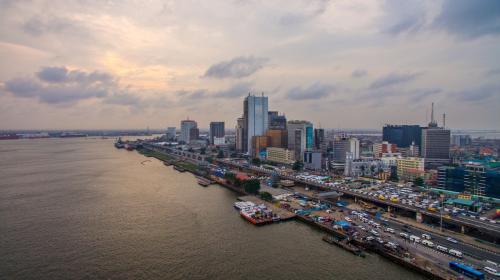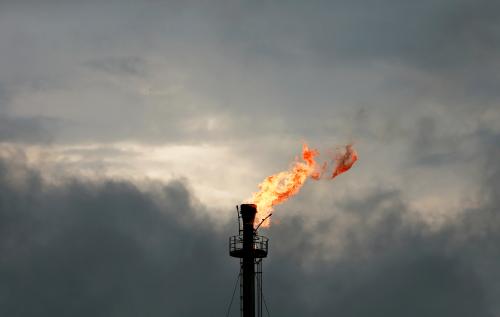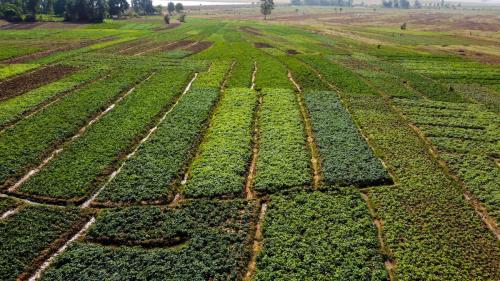Over a span of 20 years, Nigeria has witnessed a significant increase in building collapse that has resulted in loss of lives and livelihoods, as well as the displacement of families. In fact, over this period, the country ranked number one in the frequency and intensity of building collapse in Africa. The collapse of a 21-story building in November 2021 in Ikoyi, Lagos—which killed at least 45 people and seriously injured 10 others—is just one example of the severity of building and structural collapse in the country.
Anecdotal evidence from various government agencies and a review of literature revealed that between 1974 and 2019, over 221 buildings collapsed across various Nigerian cities and more than half of the collapses occurred in the economic hub of Lagos. In fact, Lagos experienced 167 reported cases between the years 2000 and 2021, 78.4 percent of which were residential buildings, 12.8 percent were commercial, and the remaining 8.8 percent were institutional buildings (Figures 1 and 2). This spate of building collapse displaced more than 6,000 households with an estimated total loss of $3.2 trillion worth of property.
Figure 1. Building collapse in Lagos, 2000-2021
 Source: Lagos State Fire Service, authors’ calculations.
Source: Lagos State Fire Service, authors’ calculations.
Figure 2. Categories of collapsed buildings

Note: Institutional buildings refers to structures such as high-rise condos and office towers, stadiums, schools, hospitals, malls, libraries, art galleries, and museums.
Source: Lagos State Fire Service, authors’ calculations.
Drivers of building collapse in Nigeria
Apart from generally known causes of building collapse, such as natural hazards, material fatigue, aging, terrorist attacks, and design flaws, human error in construction has become a prominent factor in this problem as well. In fact, many of the documented cases of building collapse in Nigeria include individuals’ or building developers’ errors of bypassing basic professional procedures of getting building plan approval, engaging the services of unqualified or unskilled builders, the use of defective or substandard building materials, illegal conversion of existing structures, and alterations of approved building permits. For instance, regarding the Ikoyi collapse, the general manager of Lagos State Building Control Agency stated that the owners had gotten approval for 15 floors but added six more on top of the original approval.
Notably, there are neither federal nor state regulations in Nigeria that mandate that individuals or building developers consult certified professionals for building construction. Consequently, professional bodies are unable to fulfill oversight functions, paving the way for unqualified or unskilled builders to oversee construction projects in the country. In a similar vein, the failure of government at different levels to prosecute the culprits of building collapse has solidified a preponderance of substandard building materials and an increasing level of impunity among building developers.
Disaster risk reduction practices
In a bid to regulate and enforce building codes in Nigeria, various state governments have agencies that supervise and monitor development activities from planning to permit approval, through construction to completion. For instance, over the years, the Lagos State government has established a Building Control Agency, Physical Planning Permit Authority, State Safety Commission, and State Material Testing Laboratory to ensure the integrity of building projects in the state. Even before the Ikoyi disaster, various policies and laws had been enacted to regulate building construction in the country, including:
- National Urban Development Law of 2006. This law aimed to develop a dynamic system of urban settlement, promote efficient urban and regional development, and support efficient monitoring of building development in the country.
- Nigerian Urban and Regional Planning (NURP) Law (decree 88 of 1992). Chapter 59 Section 74 of this law states that, in the event of the collapse of any property or structure due to negligence on the part of the owner or developer, such property shall be forfeited to the state government after due investigation and or publication in the state official gazette. In addition, the government also has powers to prosecute construction engineers and require the relevant professional bodies to have their licenses revoked if they do not follow the standard practices.
- 2010 urban and regional planning and development law of Lagos. Sections 27(1) and 75(2) of this law state that erection of a structure without a planning permit and breaking of government seals or removal of any mark placed on a contravening structure by or with order of the agency are punishable offenses.
Despite the existence of these laws, the lack of their implementation across all three tiers of government hinders their effectiveness. This state of affairs could be attributed to little or no effective monitoring of building development by government agencies due to lack of manpower and unqualified technical officers, corruption of government officials in charge of building plan approvals, or insufficient equipment to effectively oversee and approve building construction.
The way forward for the government
The tragic collapse of the 21-story building in Ikoyi, Lagos does present an opportunity for the government to improve its response to such disasters, deal with the responsible parties, and prevent a reoccurrence. To do so, policymakers should consider the following recommendations:
Enhance transparency. The government must be ready to unveil the identity of the owners, investors, major consultants, architects, quantity surveyors, structural engineers, service engineers, and project managers of the collapsed building in Ikoyi to the public. The government should also publish all the permits and considerations received during the project, and all documents that relate to safety testing (e.g., laboratory tests and services on soil, concrete, steel, chemical, calibration, nondestructive testing (NDT), and geo-technics). These procedures will enable a thorough investigation into the causes of the collapsed building, as well as ensure there are consequences for failures and encourage more responsible practices in the construction industry in the future.
Increase resources for relevant agencies. The governments of various states in Nigeria should also prioritize resourcing relevant agencies with capable and qualified professionals to ensure implementation of building code regulations in their various states. Policymakers should also work to provide modern facilities and tools such as drones and GPS for effective monitoring and enforcement of building regulations in the country.
The Brookings Institution is committed to quality, independence, and impact.
We are supported by a diverse array of funders. In line with our values and policies, each Brookings publication represents the sole views of its author(s).








Commentary
Quantifying frequent building collapse and disaster risk reduction in Nigeria
April 6, 2022